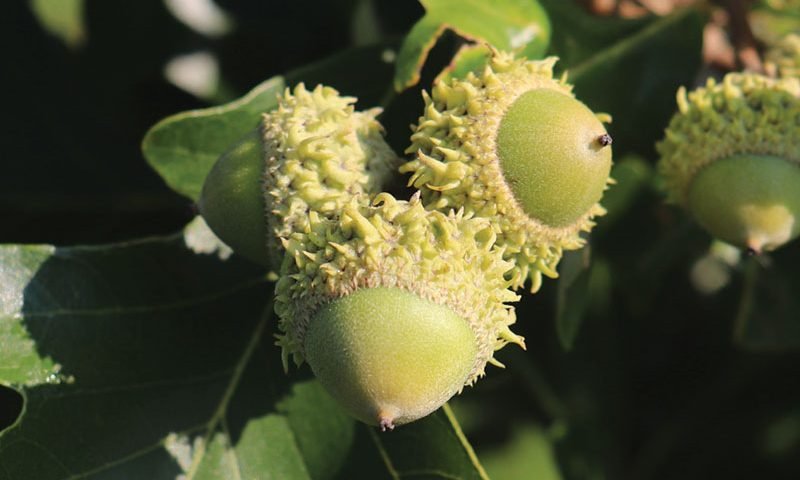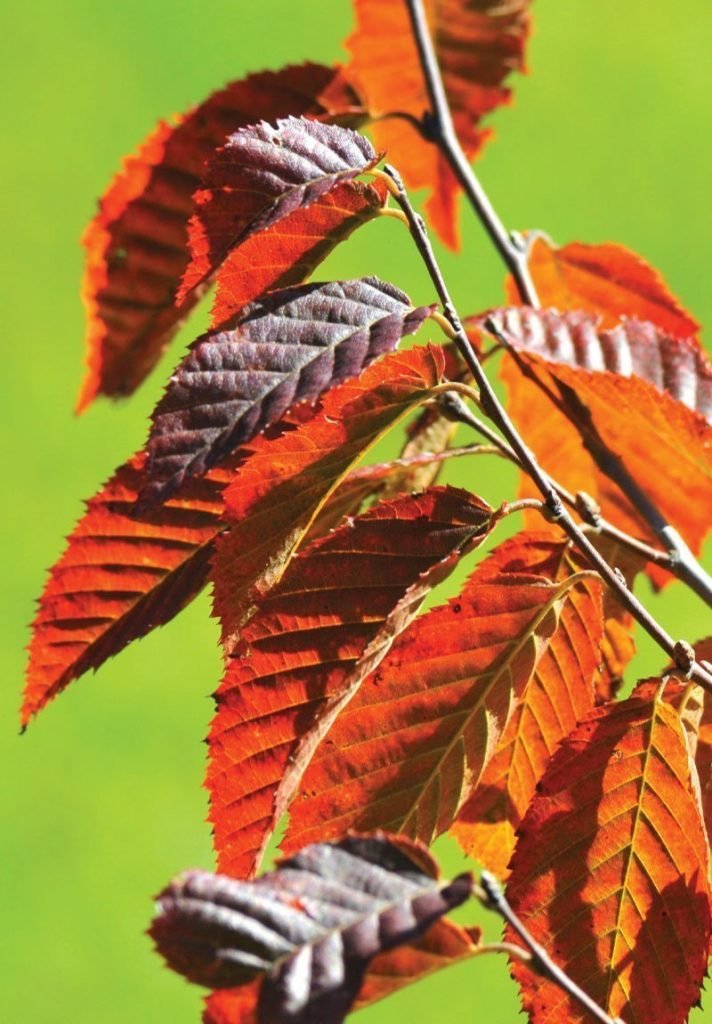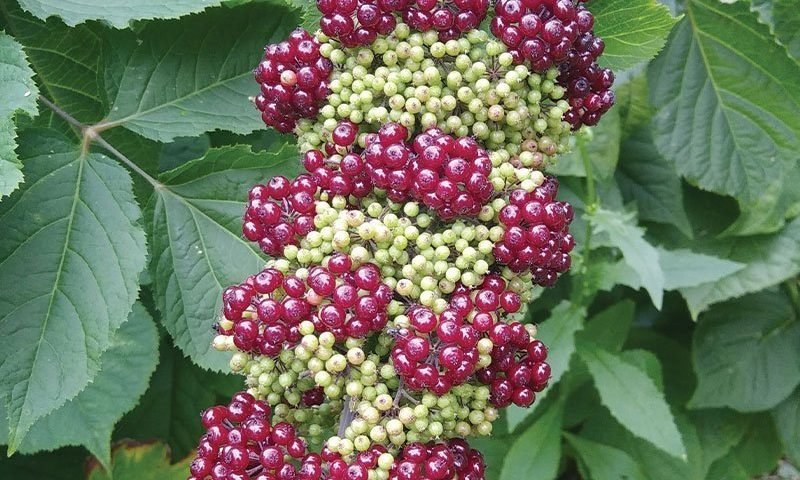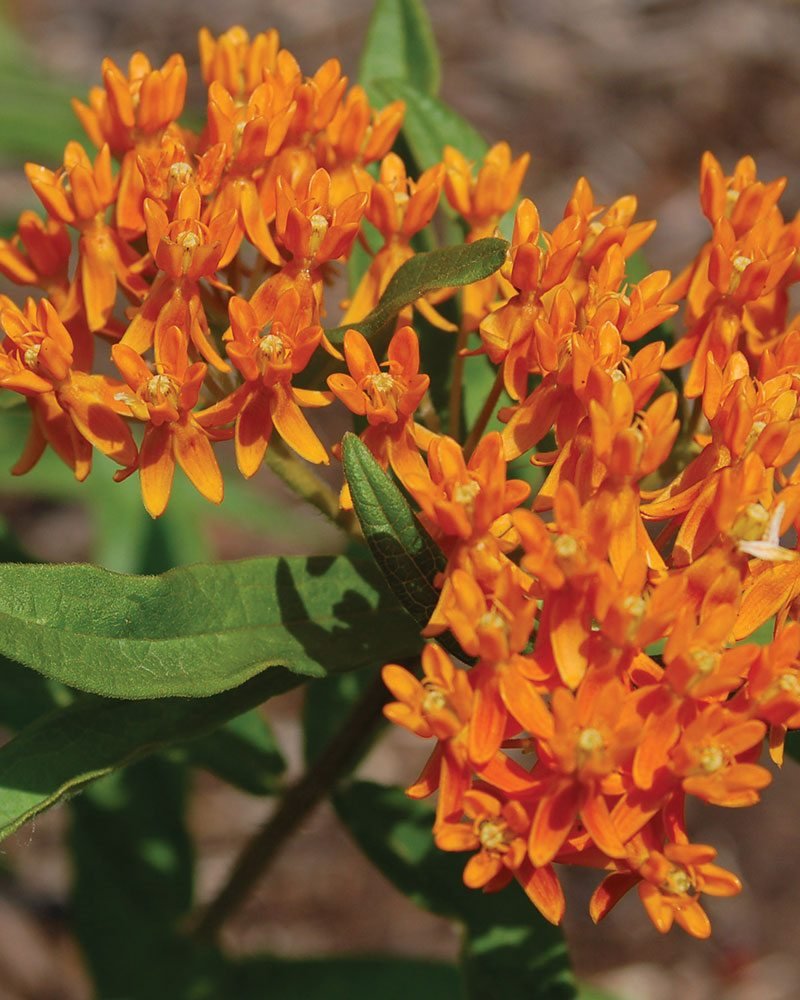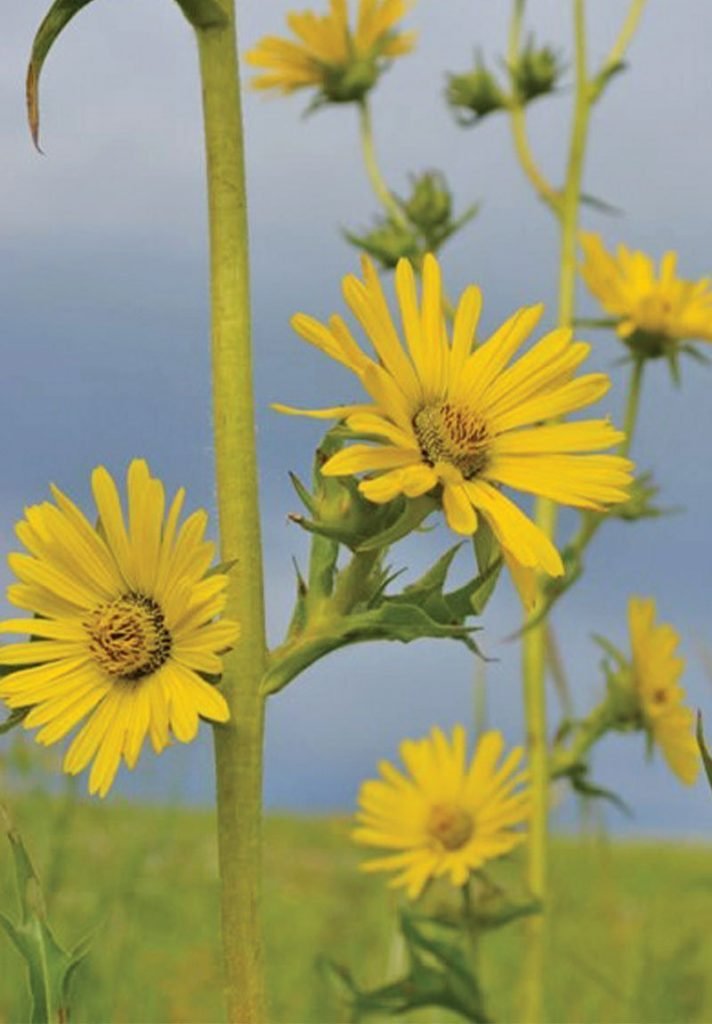Fall Planting Q & A with Ben French, Johnson’s Nursery Propagator
Johnson’s Nursery Propagator Ben French has been growing Eastern Prickly Pear Cactus and other native Wisconsin species at the nursery in Menomonee Falls for over a decade.
De Pere native Ben French went to school for forestry at the University of Wisconsin-Stevens Point and found his career growing in a different direction after enrolling in a nursery management class. “Part of that class was learning how to propagate, and I really fell in love with it,” Ben says.
It turns out I like growing trees more than I like chopping them down!
He asked his professor who he could talk to to do work in propagation, and that led to Johnson's Nursery, and Mike Yanny, the propagator at the time. “I talked to him, did an internship, and the rest is history.
“Now, I'm currently running the department. I am the VP of propagation and new product development. So I'm in charge of all the little baby plants and discovering the next new best thing out there to try to grow and sell.”
Read on to find out why Ben says fall is a great time to plant native plants, and to get his recommendations for good plants to try this fall.
Q & A: Why fall is a good time for people to plant native plants and 6 plants to try
SOS: To many people, spring is planting time. What about fall?
Ben: Now is a great time to plant trees and shrubs. It's a great time to shop at nurseries that grow their own material. They're going to be the most flush with material this time of year because they've been planting all spring, all summer long just to build up their inventories, to get over that spring rush and to have plants coming into the next spring. And the temperatures are cooler at night, so there's just less pressure on the plant overall.
Fall is a great time to plant most perennials as well. There's always exceptions, but for the most part, any perennial should be pretty easy to plant in the fall as well. Again, due to that cooler nighttime temperature and the fall rains, as long as you can get them in the ground to establish for a few weeks, they should be golden for spring. And a lot of times if you can buy a little bit bigger perennial, they'll have a better chance of overwintering. And when I say bigger, I mean maybe like a #1 container or so and then they'll flower and bloom for you in the spring, which is really nice to see too.
SOS: Are there some kind of misconceptions out there about fall planting?
Ben: Yes, there's a couple, I would say not misconceptions, but I would say overly cautious statements. Root rot, for example, can be a real danger if you're buying a sickly plant in fall and you put it in the ground and we get a long wet period or it doesn't have enough time to establish before winter comes, and then it just sits under snow the whole winter. You can definitely induce root rot at that point but the vast majority of prairie native perennials and trees are not that sensitive.
Another misconception is that you have to protect them extra over winter. And if you plant them very late in fall, for example, like after the first couple of freezes, there's no time for that plant to establish in the ground. You can lose plants really quickly that way, too, but if it's a little bit earlier in fall, it's a great time to plant because the plants are still actively growing. The root systems can establish in the ground you put them in, and the fall rains will help reduce the amount of water you need to put over the top of your planting.
SOS: Generally, what's the window for fall planting?
Ben: I would say for a true fall planting, you're going to want your cool nights probably like towards the middle of September onward, October, even the beginning part of November, are pretty decent for planting right now. It would be like late summer planting and even that's pretty good.
SOS: Should we be deadheading plants that have already bloomed or saving the seeds for wildlife?
Ben: That's a really good question and one that a lot of people have. The answer has to do for the most part with your planting and aesthetic goals. If it is a garden in the front of your house, for example, and it faces the sidewalk and the street, you could make a fairly decent case for wanting to go in there and deadhead. You want to keep that garden looking as pristine as possible. Maybe you've got picky neighbors that call you messy, and it just might look better if you remove the seed heads. But a lot of people would make the opposite argument, and they would say a lot of things that you would like to hear. They would say, if you leave those heads on there, different wildlife can use the seed heads as sources of food. And by doing that, they're often spreading the seeds so you can get more of that type of plant around your garden. And oftentimes I think they look quite ornamental in winter itself. If you have those kind of funky looking seed heads with snow all around them, it adds another season of interest.
As far as the plant health goes, you're not going to kill a plant by deadheading it. I can't think of any example where you'd hurt one, but you will be removing the food source for a lot of different birds and caterpillars and insects that depend on them.
Question: I suppose you could do that on some, but not others, either within the same species or among your garden.
Ben: Exactly. You could take the middle path. Like if you want to deadhead the seed heads that are closest to the sidewalk because you know that those are going to flop over and fall into the sidewalk and it's going to be hard to maintain, then yes, for sure, keep those off the path and make your life a little easier. And if there's some in the middle of the garden, you know exactly where they're not going to be a problem. So you can leave them up and useful over there.
Ben’s six native plants (3 trees, 3 perennials) to try this fall
Left to right: Bur Oak Tree, Musclewood Tree, Black Cherry Tree, American Spikenard, Butterfly Milkweed, Compass Plant
SOS: Are there 3 trees or shrubs you think are good candidates for planting in the fall?
I would say that really good trees for fall would be deciduous trees. They're quite a bit easier to handle as compared to evergreen trees. So I would pick something like a Bur Oak Tree, Quercus macrocarpa, for example. That's a really great plant for wildlife. It's iconic, long lasting, strong, beautiful. It's got all the features you're looking for.
Maybe something a little bit smaller, could be Musclewood Tree, which is Carpinus caroliniana. That plant is again, really strong, long lived, adds a lot of wildlife value, and it's something not a lot of people have. So it's pretty unique. Beautiful reddish orange fall color if you're getting them from Johnson's, and pretty cool.
One more tree I would recommend would be some kind of cherry. Cherries are really durable. We'll go with Black Cherry, Prunus serotina. Really durable, long-lived, relatively disease free, and they support a really broad spectrum of pollinators and birds. So in the spring they have flowers which attract pollinators. Of course, during the summer, tons of different species of caterpillars feed upon the leaves, which in turn support songbirds. They require caterpillars as a main part of their diet. And in fall, they have the wonderful cherries that the birds like to eat, and that helps them have the energy to migrate.
SOS: Any couple of examples of perennial natives that would be good ones to plant in the fall?
Yeah, I think if I had to pick some really nifty native perennials, I would pick one called American Spikenard, which is Aralia racemosa. It's a woodland forb, so a herbaceous plant and it grows up to 5 or 6 feet in a single year and it gets these large clusters of dark maroon berries that the birds just go crazy for. A lot of people don't think of perennials for the birds except for maybe some dry seed, but this one is a wonderful fruiting plant for the shade, which is really rare.
Another one is Compass Plant – Silphium laciniatum – a large sunflower-like perennial with large and interesting incised leaves that tend to orient themselves north to south. The leaves are about 2 feet tall or so, but in later summer huge flower stalks 6 feet high or more can be expected. Beautiful light yellow flowers give way to rich oily seeds which birds relish. Use this plant in the place of a specimen shrub or as a centerpiece to a small prairie themed planting. It’s long lasting deep taproots draw water many feet below the surface and the leaves often feel cool to the touch during warm days because of its deep access to water.
And then I think the last one I would promote would maybe be something like a Butterfly Milkweed or a Common Milkweed. Always be planting milkweeds. They support a lot of different pollinators, which in turn support the local food web, which birds depend on. And usually those plants are really tough, spread naturally, pretty easy to maintain in the garden and they're well worth your while.
SOS: Anything else that’s important for people to know about buying these or other plants this fall that we didn't cover already?
Ben: I would say the one final piece of the puzzle is that wherever you're buying your plants, make sure that the propagator there knows where he got them. A lot of people are starting to just Google native plants and buying the cheapest ones they can get online. And when you do that, you run the risk of buying a plant that is the same species as the one you're looking for, but is not appropriate for the area you're planting in.
So, for example, Butterfly Milkweed, you can find that plant in nature all the way from Minnesota over to Maine, down to Florida and west to Texas. That's a huge geographical range to be native to. You want to make sure that you get your butterfly milkweed from a population that's fairly close by to where you want to plant. This will ensure a couple of things. Number one, that that plant is in the right time frame to be available for use by the native pollinators and the native birds. So it's going to be in sync with where it's supposed to be. You don't want them to bloom before the birds arrive, and you don't want them to set seed after the birds leave on their migratory rope.
So that'll help it. And number two, it'll actually survive in your soil conditions much better. It'll be adapted to the local region with the sunlight, the humidity, the watering regime. It's gone through thousands of years of evolution, and it's ready for what you are about to put it into versus coming from somewhere else, moving it here.


